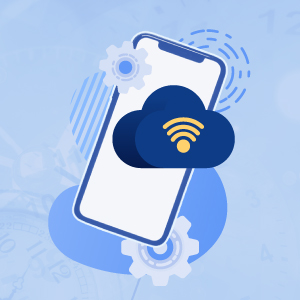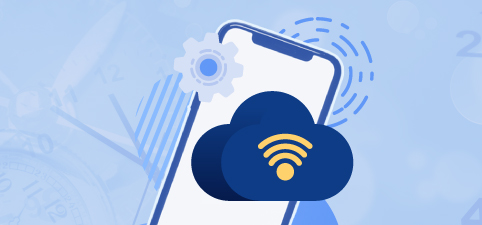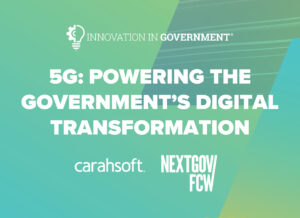The digital transformation has pushed government agencies to adopt new technologies and ways of delivering services. Cloud computing and IoT devices are reshaping how government operates now and will continue to evolve how the public sector operates.
Now, 5G broadband is poised to do the same. The benefits 5G offers will open new opportunities to serve citizens better, leveraging edge computing and low latencies to provide services where they are, wherever that might be. 5G is, however, a still-developing technology and has not reached full maturity. As of early 2021, less than half of the United States had access to the 5G spectrum, and not everyone had devices capable of using the technology. In the next couple of years, use will be as ubiquitous as current 4G coverage, even in rural areas. For now, though, it’s still fairly nascent.
So, when should your agency begin adopting 5G as a standard internally and across your programs and initiatives? The answer is now. Agencies can embrace this new technology today, keep up with technological advances, and meet citizen expectations for services. The other option is to wait, and play catch up later, which will ultimately be needlessly more difficult.
Planning IT Roadmaps Now Means Fewer Headaches Later
The promise of 5G offers so many opportunities for government agencies to improve how services are provided. The technology will make them 5x more efficient, 5x more innovative, and 5x safer.
However, it will also require 5x the planning, 5x the investment, and 5x the change management. By itself, 5G won’t help agencies deliver on their mission. It’s how government leverages the technology that will be the game changer – and that requires creating acquisition and implementation roadmaps now.
Public sector IT infrastructure will require updates and upgrades to handle the increased capacity. Addressing network needs now will allow agencies to hit the ground running when 5G becomes the norm in the not-so-distant future. Getting 5G on roadmaps serves as a beacon that the technology is coming, and agency teams need to be thinking about it now.
 Changing How Programs Operate in the Future
Changing How Programs Operate in the Future
IT practitioners will need to prepare for program shifts and the addition of new technologies that will require new infrastructure. Forward-looking agencies will explore using applications like virtual reality or new IoT devices to meet their mission. It’s difficult to say now exactly what form new initiatives may take, but program managers, agency CIOs, and procurement teams need to have the option to support these kinds of program shifts.
Smart cities have been discussed for decades and, with 5G, the bandwidth exists to make them a reality. In the United States, local, state, and federal governments have the opportunity to speed national adoption by being a front runner for local broadband initiatives.
Future program operational changes will include:
- Decoupling from a physical location – Agencies will be able to take services into the field instead of relying on a traditional office, bringing services to citizens
- Bridging the urban-rural divide – Connectivity in rural areas has lagged behind urban centers, making it more difficult to provide digital services to all citizens
- Increased use of IoT devices – Devices ranging from delivery drones to autonomous traffic lights that change with traffic patterns have the potential to reshape how government uses technology and data
Can You Scale Security with your Network?
The 5G era will introduce a host of new devices and capabilities, but also new security threats. The technology itself introduces enhanced security through mutual authentication, subscriber identity protection, and other security standards. However, government IT practitioners must also prepare for the potential of new exploits, especially as networks move off-premises and devices proliferate. The risks that will come with this new era of connectedness must be taken into consideration.
Is your IT infrastructure secure enough to handle the potential increase in threats? As you’re moving to zero trust, do you need to factor in 5G? Can you respond to ransomware attacks? Are there sufficient redundancies in place in case of data loss? The answers to these questions will require new security standards to be developed, and resiliency to be architected in.
IT infrastructure will need to be prepared and all devices, including legacy and new IOT systems, must include a security review and check.
Helping Government Determine When to Embrace 5G
Carahsoft understands the needs of government agencies and how to help them prepare for a more connected future. We work with agencies to identify their needs, upgrade legacy systems, and fill gaps where needed to make them ready for the 5G future.
Speak to a Carahsoft representative today about planning to embrace 5G technology.







